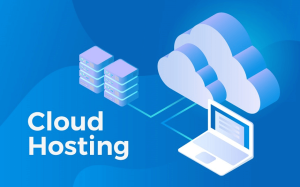Employee Recognition – What It Is, Why It Matters, and How to Use It Effectively

Employee recognition comes in all shapes and sizes. It can be awarded in the form of a promotion or a raise. It can be shown more subtly via handwritten letters or by making upgrades to the working environment.
Regardless of how it is done, recognizing the efforts of your employees should be a vital part of any employee management practice plan.
Recognizing the work of your employees will help keep them engaged and satisfied with their work. Let’s face it, as human beings, validation and approval are two of the most primal needs we seek to fulfil. No matter how much Buddha’s teachings try warning us against requiring these things, we just cannot seem to help it.
Failing to recognize your employees could lead to feelings of disengagement. This can grow into a much larger problem, as disengaged employees are 12x more likely to leave their job. Integrating employee recognition tactics into your company culture will save your business money and time in the long run.
What is employee recognition?
Simply defined, employee recognition is the timely acknowledgement of a workers behaviour, actions or achievements within a company or team. This can be done in a number of ways, either publicly or privately. It shows the individual receiving the recognition that their work is valued and can be an important driver for future success.
Does employee recognition actually make a difference?
Effective employee recognition can mean the difference between holding onto your best employees and losing them to the competition. In his TEDx talk, Behavioral Economist, Dan Ariely addresses the idea that we are motivated by more than money at work.
He wanted to test the hypothesis that the less appreciated we feel our work is, the more money we want to do it. He achieved this by studying his students at MIT. Giving them all pieces of paper filled with random letters, he asked the students to outline pairs of identical letters. They would all be paid for their efforts. One group was asked to title their work with their names, while the other two groups were not.
Upon completion, the first group who had written their names down watched as Ariely looked over each piece of paper before placing them neatly in a pile. The second group witnessed him place each sheet in a pile without even a glance, while the third group’s sheets were shredded in front of them.
Offered compensation once more, they were asked to do the task again. Interestingly, the group whose work was completely ignored wanted as much compensation as those whose work was shredded instantly.
The conclusion?
People want their work recognized! Shredding their work right in front of them can be as damaging as ignoring their efforts all altogether.
The best part about this is that the solutions to recognize your employees are often cost-effective and can be implemented right away.
4 ways to effectively recognize your employees
Celebrate their achievements
Being there for employees when they reach milestones in work and life is the best way to recognize them. This will show your employees that you genuinely care for their progression and want to see them succeed.
Where appropriate to do so, celebrate the birth of children, long service leave, and engagements. If you are aware that they have just achieved something in their extracurricular lives, be sure to congratulate them on this as well!
Taking the time to show interest in what they are up to outside of work will not go unnoticed. However, it’s important to remember that some employees may wish to keep their personal lives private and this should always be respected.
Don’t forget those working remotely now as a result of COVID-19. Make sure you are still regularly screen sharing with them and letting them their efforts are not going unnoticed. A friendly call could be just what someone needs during this stressful time.
Upgrade their working environment
Recognition can be shown more subtly through the improvement of one’s space. A study shows that ⅓ of our lives are predicted to be spent at work. This statistic should make spending money to upgrade the environment unavoidable.
This doesn’t mean your employees are expecting lavish renovations, top-of-the-range facilities or expensive lunch options. But it does provide you with the opportunity to show you care.
Take some time to brainstorm how your money can be well spent on purchasing essential and non-essential items.
For example, a non-essential item could be a new coffee machine for the lunchroom. It isn’t necessary for the immediate growth of the company, but it states that worker’s happiness comes before profit margins and cost-cutting. Essential items could be new technology that workers have been requesting or tools that enhance current processes.
Provide opportunity and room for growth
Outlining clear avenues for promotion and personal/professional improvement is a sure-fire way to motivate your employees. They will appreciate that their hard work could be rewarded with opportunities down the road.
Nothing stagnates employee ambition and engagement more than a dead-end. In fact, providing opportunity and room for growth has been linked with increased employee retention and engagement.
When a long-serving employee decides to step down or take leave, consider offering the position in-house before advertising elsewhere. It may cost more to upskill and train an existing worker, but it will state loud and clear that you care about your team. The promotion of an employee can be motivating for their hard working colleagues who may be planning to climb the corporate ladder themselves. It shows it is possible.
Offer bonuses and incentives
When used appropriately, issuing bonuses and incentives can be an extremely effective way to recognize employees.
Include these rewards in your budget when adding up costs for future projects. Be careful though, bonuses and incentives should not be handed out too easily or used on every project. Using them sparingly will increase drive within your workforce.
Get creative with your incentives and use your authority wisely. This is another opportunity to be thoughtful and come up with gifts or prizes that are relevant to the employee.
If an employee excels on a project and you know they are avid readers, buy them a large book voucher. It will be much more well-received then tickets to an NBA game. Take some time to think about how your money will be better spent on these incentives. A thoughtful gift will usually be more valuable to an employee than an expensive one.
The bottom line
Employees are the backbone of your any business and should be treated as such. Every day we are coming to realise that a happy workforce is a productive one. Enormous, successful companies like Google, Samsung and Apple are incorporating these tips into their work processes to ensure their staff are satisfied when they are at their job.
Google employees rank among the most satisfied out of any group of workers out there. What do they often report to be the reason?
They are recognized for their work and feel like they are contributing to a greater cause.
The exciting thing about employee recognition is that it doesn’t take much money or time, which are both valuable resources for any business. It comes down to being thoughtful and planning to incorporate the needs and feelings of your employees in future business decisions.
There are dozens of effective techniques employers can implement, but we hope these 4 start you on your journey!






